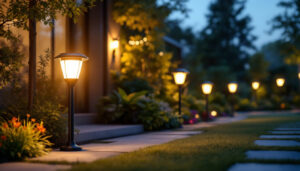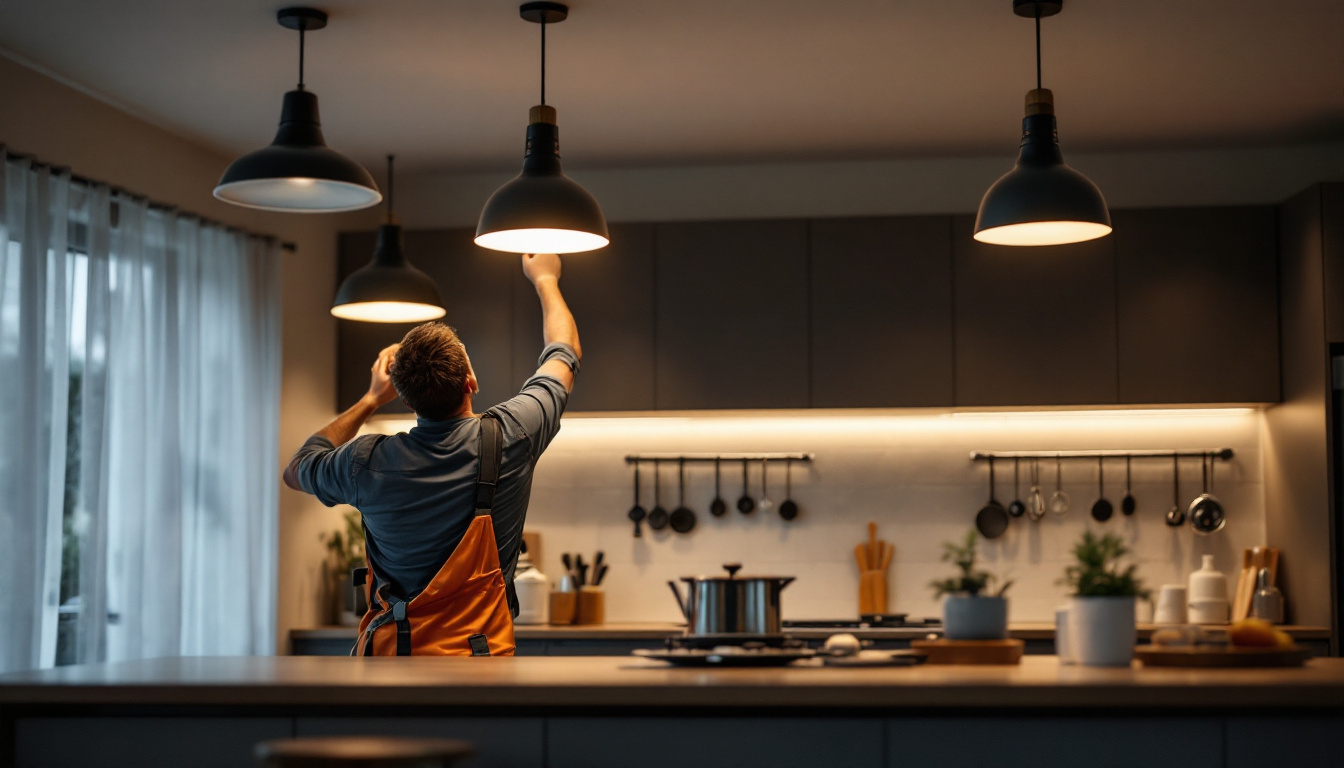

The kitchen is often considered the heart of the home, a space where functionality meets aesthetics. As a lighting contractor, understanding the nuances of kitchen ceiling light fittings can elevate your projects and satisfy your clients. This article explores innovative hacks and strategies that can help you enhance your lighting designs, ensuring they are both smart and stylish.
Before diving into specific fittings and hacks, it’s essential to grasp the unique lighting needs of a kitchen. Unlike other rooms, kitchens require a blend of ambient, task, and accent lighting. This combination ensures that the space is not only well-lit but also inviting. A well-thought-out lighting plan can enhance functionality while also setting the mood for family gatherings or entertaining guests.
Ambient lighting provides the general illumination necessary for safety and comfort. This can be achieved through ceiling fixtures such as flush mounts or chandeliers. Task lighting, on the other hand, focuses on specific areas where activities like cooking and food preparation occur. Under-cabinet lights and pendant fixtures above islands are popular choices for this purpose. For instance, LED strip lights installed under cabinets not only brighten countertops but also add a modern touch to the kitchen’s aesthetic.
Accent lighting adds a decorative element, highlighting features such as artwork or architectural details. This type of lighting can create a warm atmosphere, making the kitchen feel more like a gathering space. Consider using adjustable spotlights to showcase a beautiful backsplash or a collection of cookbooks on a shelf. The interplay of light and shadow can enhance the visual interest of the kitchen, making it a focal point of the home.
The layout of the kitchen plays a crucial role in determining the type and placement of ceiling light fittings. Open-concept kitchens, for instance, may require more versatile lighting solutions to seamlessly blend with adjoining spaces. Understanding the flow of the kitchen and how it interacts with other areas can help in selecting the right fixtures. For example, using pendant lights that match the dining area can create a cohesive look, ensuring that the kitchen feels integrated with the rest of the living space.
Additionally, the height of the ceiling should be taken into account. Higher ceilings may necessitate longer pendant lights or chandeliers, while lower ceilings might benefit from flush-mounted lights to avoid overwhelming the space. It’s also important to consider the color temperature of the bulbs used, as warmer tones can create a cozy environment, while cooler tones can enhance focus and alertness during meal prep. Balancing these elements effectively can transform the kitchen into a functional and aesthetically pleasing area that caters to both cooking and socializing.
With a clear understanding of the kitchen’s lighting needs, it’s time to explore innovative fitting options that can enhance both functionality and design.
Incorporating smart lighting technology into kitchen designs can significantly enhance user experience. Smart bulbs and fixtures allow homeowners to control brightness, color, and even scheduling through their smartphones or smart home systems. This level of control can be particularly beneficial in a kitchen, where lighting needs may change throughout the day.
For instance, a homeowner might prefer bright, cool lighting during meal prep but opt for warmer tones during dinner parties. By offering smart lighting solutions, contractors can provide added value and convenience to their clients. Furthermore, many smart lighting systems can be integrated with voice-activated assistants, allowing users to adjust their kitchen lighting hands-free. This feature is especially useful when hands are full or dirty, making cooking and entertaining more seamless and enjoyable.
Layered lighting is an effective way to create a dynamic kitchen environment. By combining different types of lighting—ambient, task, and accent—a contractor can design a space that is both functional and aesthetically pleasing. For example, using recessed lighting for ambient illumination, pendant lights for task lighting, and LED strip lights for accent lighting can create a well-rounded lighting scheme.
Moreover, layering allows for flexibility. Homeowners can adjust the lighting to suit various activities, from cooking to entertaining, simply by switching on or off specific layers. This adaptability not only enhances the kitchen’s functionality but also allows homeowners to set the mood for different occasions. For instance, a soft, warm glow can create an inviting atmosphere for family gatherings, while bright, focused lighting can help ensure precision during intricate cooking tasks.
With growing awareness of energy consumption, offering energy-efficient lighting solutions is not only environmentally responsible but also appealing to cost-conscious clients. LED fixtures are a prime choice, as they consume significantly less energy than traditional incandescent bulbs and have a longer lifespan.
Additionally, incorporating dimmable options can further enhance energy efficiency. By allowing homeowners to adjust the brightness according to their needs, energy consumption can be minimized without sacrificing quality of light. Beyond just LEDs, there are also solar-powered options available for kitchens with ample natural light. These fixtures harness sunlight during the day, reducing reliance on electric lighting and further lowering energy bills. As sustainability becomes a priority for many homeowners, showcasing these eco-friendly lighting solutions can set contractors apart in a competitive market.
Proper installation is crucial for the performance and longevity of ceiling light fittings. Here are some essential tips to ensure a successful installation.
When installing ceiling lights, placement is key. For ambient lighting, fixtures should be evenly distributed to avoid dark spots. A common rule of thumb is to place lights approximately 3 feet apart, depending on the fixture’s brightness and the size of the kitchen.
For task lighting, fixtures should be positioned directly above work areas. For instance, pendant lights should hang 30 to 36 inches above kitchen islands or countertops to provide optimal illumination without obstructing views.
Wiring is another critical aspect of installation. Ensuring that the electrical system can handle the load of new fixtures is essential. This may involve upgrading wiring or circuits, especially when adding multiple fixtures or integrating smart technology.
Contractors should also consider the location of switches and dimmers. Installing these controls in convenient locations can enhance usability and improve the overall lighting experience.
Safety should always be a priority during installation. Contractors must adhere to local electrical codes and regulations. It’s advisable to turn off power at the circuit breaker before starting any installation work. Additionally, using proper tools and protective equipment can help prevent accidents and ensure a smooth installation process.
Staying updated on the latest trends in kitchen lighting can provide contractors with a competitive edge. Here are some current trends that are shaping the industry.
Minimalism continues to dominate kitchen design, and lighting is no exception. Sleek, simple fixtures that blend seamlessly with the overall design are highly sought after. Flush mounts and streamlined pendant lights are popular choices that offer both style and functionality.
Contractors should consider recommending fixtures that complement the kitchen’s color palette and materials, creating a cohesive look that appeals to modern sensibilities.
On the opposite end of the spectrum, industrial and vintage styles are making a comeback. Fixtures that feature exposed bulbs, metal finishes, and rustic elements can add character to a kitchen. These styles often evoke a sense of warmth and nostalgia, making them appealing to homeowners looking to create a unique space.
Incorporating these styles can be as simple as suggesting a few carefully selected fixtures that align with the homeowner’s vision.
Another trend gaining traction is the use of varying color temperatures within the same space. By combining warm and cool lighting, contractors can create depth and interest. For example, warm white lights can be used for ambient lighting, while cooler tones can enhance task areas, providing a versatile lighting solution.
Educating clients on the benefits of color temperature variations can help them make informed decisions about their kitchen lighting.
Once the installation is complete, maintenance becomes crucial to ensure the longevity and performance of ceiling light fittings. Here are some tips for keeping fixtures in top condition.
Dust and grime can accumulate on light fixtures, diminishing their brightness and overall appearance. Regular cleaning is essential, particularly in kitchens where grease and cooking residue can build up. Using a soft cloth and a mild cleaning solution can help maintain the fixtures’ shine.
Contractors should advise clients on the best cleaning practices for their specific fixtures, as some materials may require special care.
Over time, bulbs will need to be replaced to maintain optimal lighting levels. Educating clients on the types of bulbs compatible with their fixtures can facilitate this process. Additionally, recommending energy-efficient bulbs can help clients save on energy costs while reducing their environmental footprint.
Encouraging homeowners to consider upgrades, such as smart bulbs or more advanced LED options, can further enhance their kitchen lighting experience.
Encouraging periodic inspections can help identify potential issues before they become major problems. Homeowners should be advised to check for flickering lights, unusual sounds, or any signs of wear in the wiring or fixtures. Addressing these issues promptly can prevent safety hazards and costly repairs.
Kitchen ceiling light fittings play a pivotal role in creating a functional and inviting space. By understanding the unique lighting needs of kitchens, exploring innovative fitting options, and implementing best practices for installation and maintenance, lighting contractors can significantly enhance their projects.
Staying informed about current trends and technologies will not only benefit contractors but also provide homeowners with the best possible solutions for their lighting needs. Ultimately, the goal is to create a kitchen environment that is not only well-lit but also a true reflection of the homeowner’s style and preferences.
Ready to take your kitchen lighting projects to the next level? At LumenWholesale, we provide lighting contractors with the ultimate selection of high-quality, spec-grade ceiling light fittings at unbeatable wholesale prices. Say goodbye to local distributor markups and hello to a vast array of reliable, high-performance lighting options that meet the highest industry standards. Plus, with free shipping on bulk orders, you can stock up on premium lighting solutions without worrying about hidden fees or compromises. Elevate your lighting designs and give your clients the best value by choosing Wholesale Lighting at the Best Value with LumenWholesale.

Discover the essentials of solar landscape lighting that every lighting contractor should master.

Discover how industrial pendant lamps can revolutionize the workflow for lighting contractors by offering cost-effective solutions and time-saving installation processes.

Discover why wire pulling ropes are indispensable tools for lighting contractors.

Discover the advantages and drawbacks of high bay LED light fixtures for lighting contractors.
Get notified when NEW deals are released.
Optimize your budget with wholesale discounts.
Only top-quality, specification-grade lighting products.
No additional costs at checkout - what you see is what you pay.
We understand the unique needs of contractors.